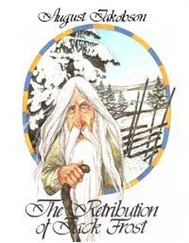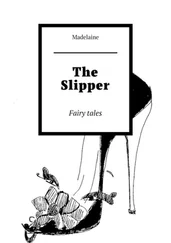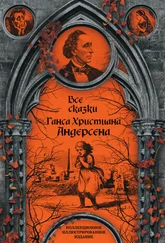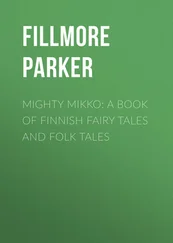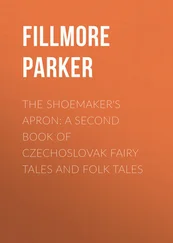Ганс Андерсен - Fairy Tales
Здесь есть возможность читать онлайн «Ганс Андерсен - Fairy Tales» весь текст электронной книги совершенно бесплатно (целиком полную версию без сокращений). В некоторых случаях можно слушать аудио, скачать через торрент в формате fb2 и присутствует краткое содержание. Жанр: Старинная литература, на английском языке. Описание произведения, (предисловие) а так же отзывы посетителей доступны на портале библиотеки ЛибКат.
- Название:Fairy Tales
- Автор:
- Жанр:
- Год:неизвестен
- ISBN:нет данных
- Рейтинг книги:4 / 5. Голосов: 1
-
Избранное:Добавить в избранное
- Отзывы:
-
Ваша оценка:
- 80
- 1
- 2
- 3
- 4
- 5
Fairy Tales: краткое содержание, описание и аннотация
Предлагаем к чтению аннотацию, описание, краткое содержание или предисловие (зависит от того, что написал сам автор книги «Fairy Tales»). Если вы не нашли необходимую информацию о книге — напишите в комментариях, мы постараемся отыскать её.
Fairy Tales — читать онлайн бесплатно полную книгу (весь текст) целиком
Ниже представлен текст книги, разбитый по страницам. Система сохранения места последней прочитанной страницы, позволяет с удобством читать онлайн бесплатно книгу «Fairy Tales», без необходимости каждый раз заново искать на чём Вы остановились. Поставьте закладку, и сможете в любой момент перейти на страницу, на которой закончили чтение.
Интервал:
Закладка:
The Hans Christian Andersen We Never Knew

Long before publishers knew how to market their authors with dexterity, long before Walt Disney made his name into an international logo, Hans Christian Andersen knew how to create himself as a celebrity and glorify his name, despite the fact that he was a writer with limited talents. As a young country boy—perhaps, one could even say, a country bumpkin—who was poor as a church mouse, Andersen tried to take Copenhagen by storm in 1819, when he was only fourteen years old, and very few people would have wagered at that time that he would become the most famous fairy-tale writer of the nineteenth century, even more famous than the Brothers Grimm. But his fame was also tainted. Andersen was a nuisance, a pest, a demanding intruder, and a clumsy actor, whose greatest desire was to write plays and star in them. He never fully realized this ambition, but he did become an inventive and innovative writer of fairy tales, and he used his tales therapeutically to come to terms with the traumas and tensions in his life. All this led to the formation of an extraordinary personality, for Andersen was one of the greatest mythomaniacs, hypochondriacs, and narcissists of the nineteenth century. He custom-made his life into a fairy tale that he sold successfully from the moment he arrived in Copenhagen, and it is impossible to grasp him or any of his tales without knowing something about the reality of his life and his strategies for survival.
But how is it possible to know the reality of Andersen’s life when he consciously concealed many vital facts and incidents in the three autobiographies he wrote? How is it possible to relate his unusual, autobiographical tales to his life when they are so fantastic and can be interpreted in many different ways and on many levels? Andersen appears to defy definition and categorization, and it may not even be necessary to know something about his life to appreciate his tales. Yet because he wove himself so imaginatively into his narratives and because there are so many misunderstandings about his life and the meanings of his tales, it is crucial to attempt to sort through the myths about him and investigate how his tales came into existence so that we can have a fuller and clearer appreciation of the difficulties he overcame to achieve the success he did. Moreover, it is important to realize how diverse his stories are, for they were not all fairy tales about his life. Nor were they written for children. Nor did they always end happily. There is something uncanny and often chilling about Andersen’s tales, a bitter irony that makes us wonder whether the pursuit of happiness and success is worth all the effort.
Andersen was born on April 2, 1805, into a dirt-poor family in Odense, in a squalid section of the provincial town of about 15,000 people. His father, Hans, was a shoemaker, several years younger than his wife, Anne Marie Andersdatter, a washerwoman and domestic. His parents suffered from poverty all their lives; his father became so desperate at one point that he took money from another man for replacing him as a soldier in a draft recruitment and serving for two years in the Danish army during the Napoleonic Wars. Overly sensitive about his family’s poverty and his homely appearance, Andersen kept to himself as a young boy. When he was seven, his parents took him to the theater, and a new, fantastic world exploded before his eyes: From this point on theater life came to represent a glorious realm of freedom, and he hoped to become a great writer involved with the stage. But there was a lot of misery to overcome: His father, a sick and broken man, died in 1816, two years after he returned from the wars; his mother was afflicted by alcoholism; the teenager Andersen was often humiliated at work by older boys and men; he was haunted by the insanity that ran in the family and felt shame about an aunt who ran a brothel in Copenhagen. The traumas of his youth cast him into the role of outsider, and they undoubtedly led him to imagine how he might abandon Odense and create a different life for himself as an actor or writer. Indeed, he showed an early proclivity for reading and writing, even though his schooling was modest, and he believed deeply that he belonged elsewhere—perhaps he was the son of a royal couple, he imagined. Clearly, his imagination was fertile, but his drive and ambition were just as important.
Andersen’s immense desire to become a famous writer or actor drove him to transcend his poor start in life and his social status. In 1819, when he was only fourteen, he convinced his mother to allow him to travel to Copenhagen to pursue his dreams. But once he arrived, he again faced one trial after the next. At that time Copenhagen was a relatively small port city of 120,000 inhabitants, and Danish society, dominated by the aristocracy and upper-middle class, was highly stratified. Armed with a letter of introduction from Mr. Iversen, an Odense printer, to Madame Schall, a renowned solo dancer at the Royal Theater, Andersen made numerous attempts to impress people with his talent, but he was too raw and uncouth to be accepted into the art world. To rectify the situation he took singing and acting lessons and even had a bit part as a troll in a play performed at the Royal Theater in Copenhagen. In addition he tried to write plays that he continually submitted to the theater management, which always rejected them. Then a wealthy legal administrator, Jonas Collin, took him under his wing and sent him to a private boarding school to fine-tune him for polite society. From 1822 to 1827, Andersen was indeed trained and re-tooled, largely by a neurotic taskmaster named Simon Meisling, first in Slagelse, a provincial town 50 miles from Copenhagen, and later in Helsingør. Andersen, who was several years older and much taller than his classmates, was instructed to forget all ideas of becoming a writer or poet; Meisling, a notable scholar but a notoriously mean and petty man, who delighted in humiliating Andersen, tried to drill him according to the strict regulations of a classical education and often humiliated Andersen in and outside the classroom. Though he did learn a great deal and managed to keep writing poems and sketches, Andersen suffered greatly from Meisling’s constant persecution. Only the support of Collin and friendships with elderly men—such as the great Danish poet B. S. Ingermann, the physicist H. C. Ørsted, and the commodore Peter Frederick Wulff—and their families enabled him to tolerate the five years with Meisling. By 1827 Collin allowed Andersen to return to the city and prepare himself for admission to the University of Copenhagen. When he passed the matriculation examination in 1829, however, Andersen took the bold step of embarking on a career as a free-lance writer. That same year he had a modest success with a fantasy sketchbook, A Walking Tour from the Holmen Canal to the Eastern Point of Amager, influenced by German Romantic writer E. T. A. Hoffmann, and a sentimental comedy, Love at St. Nicholas Tower, which was performed at the Royal Theater in Copenhagen. These works enabled Andersen to convince Collin that he was “destined” to become a writer, and it was Collin, who assisted him time and again to obtain royal stipends and to make connections that were to be beneficial for Andersen throughout his life. At that time in Denmark and in Europe as a whole, it was very difficult to earn a living as a free-lance writer unless one was born into money, was supported by an aristocratic patron, or received a royal grant.
Although Collin’s help was significant, it was Andersen’s perseverance, audacity, and cunning that enabled him to climb to fame starting in the early 1830s. It is difficult to say whether Andersen consciously conceived plans for his success or whether he intuitively knew what he had to do to survive in Danish and European high society. In his scrupulously researched biography, Hans Christian Andersen: A New Life (Woodstock, NY: Overlook Press, 2005), Jens Andersen notes that the young writer early on concocted a story about himself that gained him admission into the upper classes. It was truly a kind of fairy tale, in which Andersen, the poor ugly duckling, triumphs against the odds and becomes a gifted writer because God has ordained it so. Sometimes he blended it with the motif of Aladdin and the magic lamp, which he introduced in his first fairy tale, “The Tinderbox” (1835). Andersen had to prove that he was a soldier of fortitude who had the makings of a king, or that he was an oppressed and awkward fowl who would develop into an elegant swan. This was the story that he repeated to himself, and it formed the basis of his three autobiographies. At the same time, Andersen learned how to market himself as the Lord’s chosen writer whenever he traveled abroad—he made more than thirty trips throughout Europe and the Middle East during his lifetime. Beginning with his first major trip to Germany in 1831, he would send his books to famous authors and wealthy people in advance of his arrival, implying that he was a kind of poetic genius who was stunning the world and was thus worth meeting and befriending. Indeed, Andersen did have a peculiar charm that made him an odd and delightful performer for court societies and upper-middle-class salons, which were always on the lookout for “sensational” entertainment.
Читать дальшеИнтервал:
Закладка:
Похожие книги на «Fairy Tales»
Представляем Вашему вниманию похожие книги на «Fairy Tales» списком для выбора. Мы отобрали схожую по названию и смыслу литературу в надежде предоставить читателям больше вариантов отыскать новые, интересные, ещё непрочитанные произведения.
Обсуждение, отзывы о книге «Fairy Tales» и просто собственные мнения читателей. Оставьте ваши комментарии, напишите, что Вы думаете о произведении, его смысле или главных героях. Укажите что конкретно понравилось, а что нет, и почему Вы так считаете.

![Ганс Андерсен - Ганс Чурбан[другой перевод]](/books/95480/gans-andersen-gans-churban-drugoj-perevod-thumb.webp)

